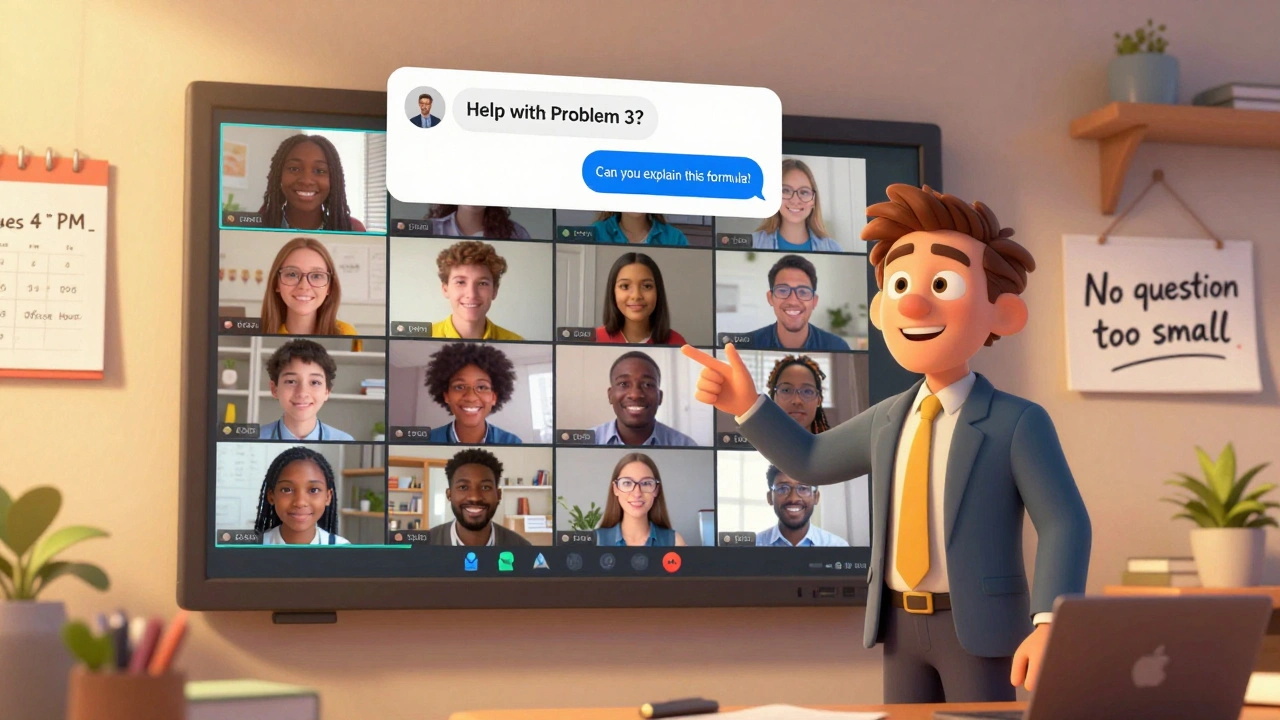Virtual Classroom: How Online Learning Spaces Actually Work
When you think of a virtual classroom, a digital space where teachers and students interact in real time to teach and learn. Also known as online learning environment, it’s not just Zoom calls or recorded lectures—it’s the entire system that holds learning together when you’re not in the same room. Most people assume if you have a screen and a webcam, you’ve got a classroom. But that’s like saying a kitchen is a restaurant because it has a stove. A real virtual classroom needs structure, interaction, and purpose—or students tune out, drop off, and forget everything by Monday.
What makes a virtual classroom work? It’s not the platform. It’s how you use it. online learning, education delivered through digital tools, often asynchronously or in live sessions can feel lonely if it’s just videos and PDFs. But when you add live Q&A, breakout rooms, real-time feedback, and community norms—suddenly, it feels like a place people belong to. That’s where e-learning, structured learning delivered via digital content, often with assessments and progress tracking becomes something people stick with. And it’s not magic. It’s design. Think about office hours that aren’t just open slots but themed sessions. Think about quizzes that feel like puzzles, not tests. Think about students who know their name will be called, their question will be answered, and their effort will be seen.
People don’t fail because the material is too hard. They fail because they feel alone. That’s why the best virtual classrooms build in accountability—cohort-based pacing, peer check-ins, progress badges. They don’t just deliver content. They create rhythm. They turn passive viewers into active participants. You’ll see this in posts about gamification, micro-learning, and even escape room-style challenges. Those aren’t gimmicks. They’re fixes for the biggest problem in remote education: disengagement.
And it’s not just about keeping students awake. It’s about making sure they remember what they learned. That’s why clear glossaries, structured feedback loops, and accessible design matter. A virtual classroom that ignores accessibility isn’t just unfair—it’s ineffective. The same goes for content moderation. If students feel unsafe or ignored, they won’t stay. This isn’t theory. It’s what top course creators are doing right now.
What follows isn’t a list of tools. It’s a collection of real, tested ways people are making virtual classrooms work—whether they’re teaching trading, coding, or language skills. You’ll find how to build engagement without burnout, how to design courses that stick, and how to turn a screen into a classroom people actually want to show up to. No fluff. No hype. Just what works.

Virtual Office Hours: How to Set Up, Schedule, and Run Them Effectively
Virtual office hours are essential for student success in online courses. Learn how to set up, schedule, and run them effectively with proven strategies that boost engagement and retention.

Differentiation Strategies in Online Learning Classrooms to Boost Engagement and Retention
Learn practical differentiation strategies for online classrooms that boost engagement and retention using adaptive learning techniques. Discover how to tailor content, feedback, and assessments to meet diverse student needs.

Technical Requirements for Hosting a Virtual Classroom
Learn the essential technical requirements for hosting a reliable virtual classroom, from bandwidth and hardware to LMS integration and security. Avoid common pitfalls that disrupt online learning.